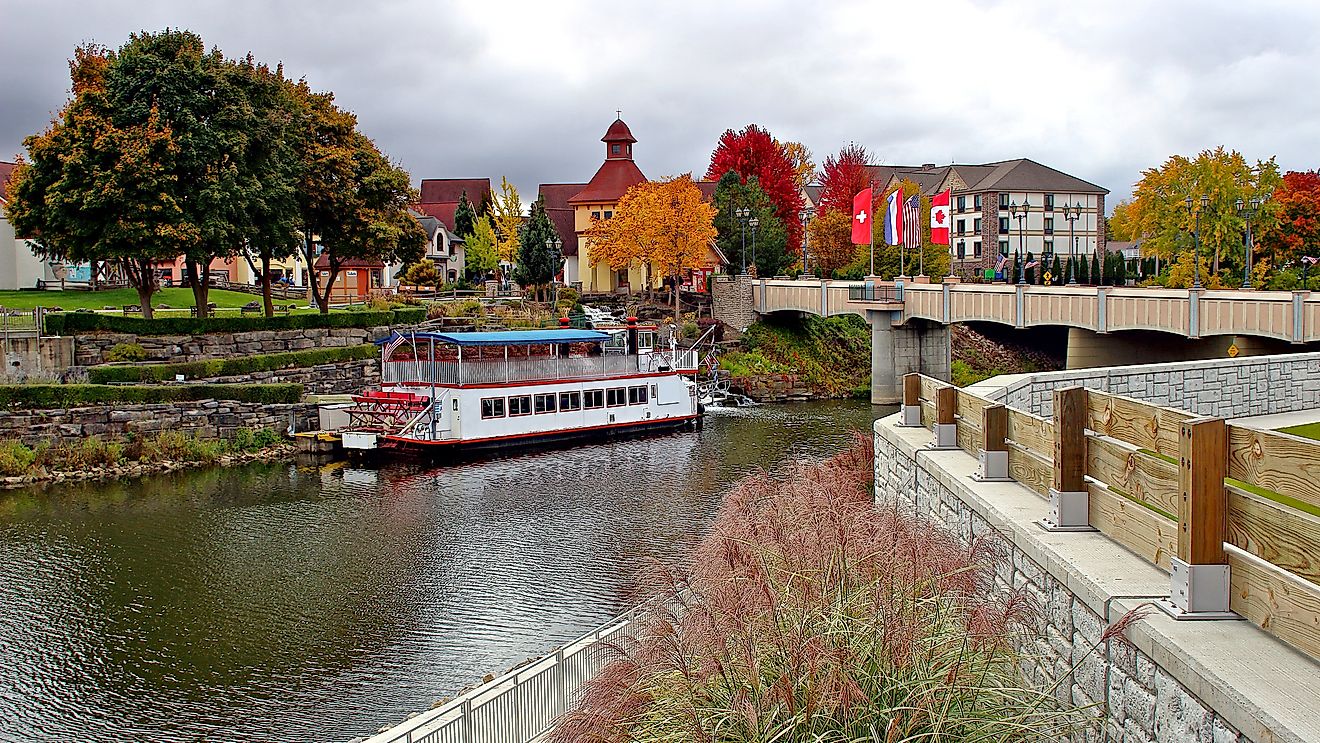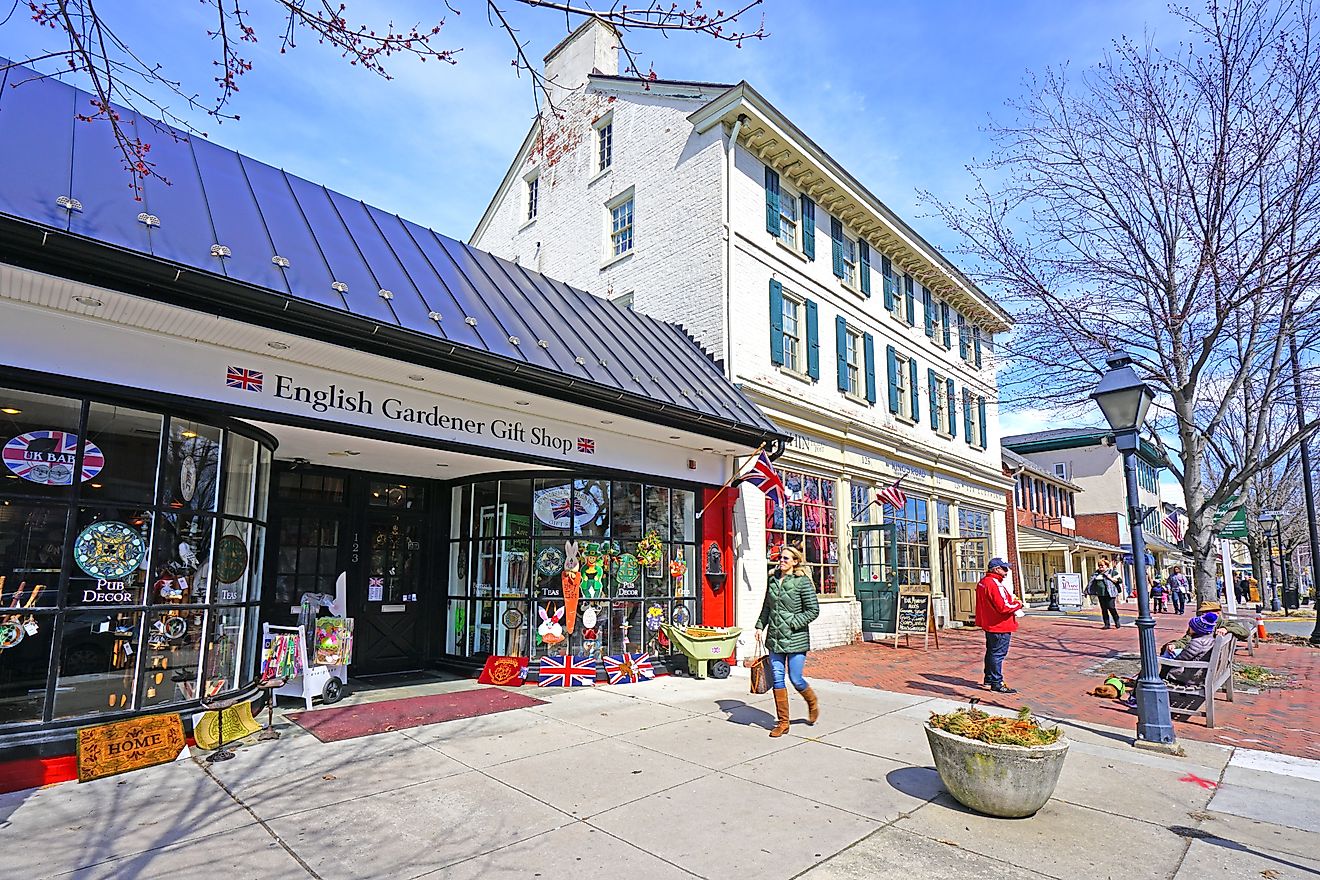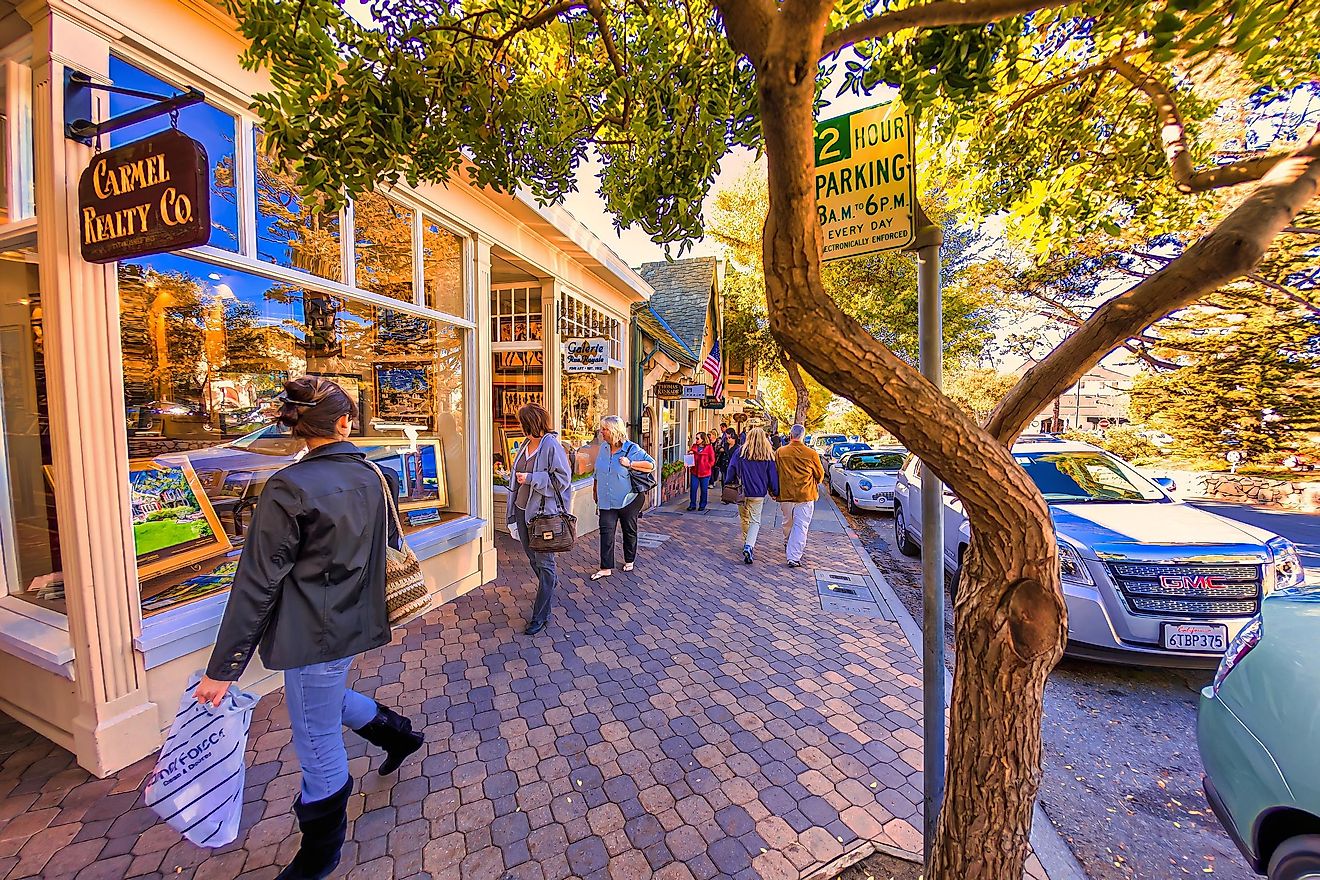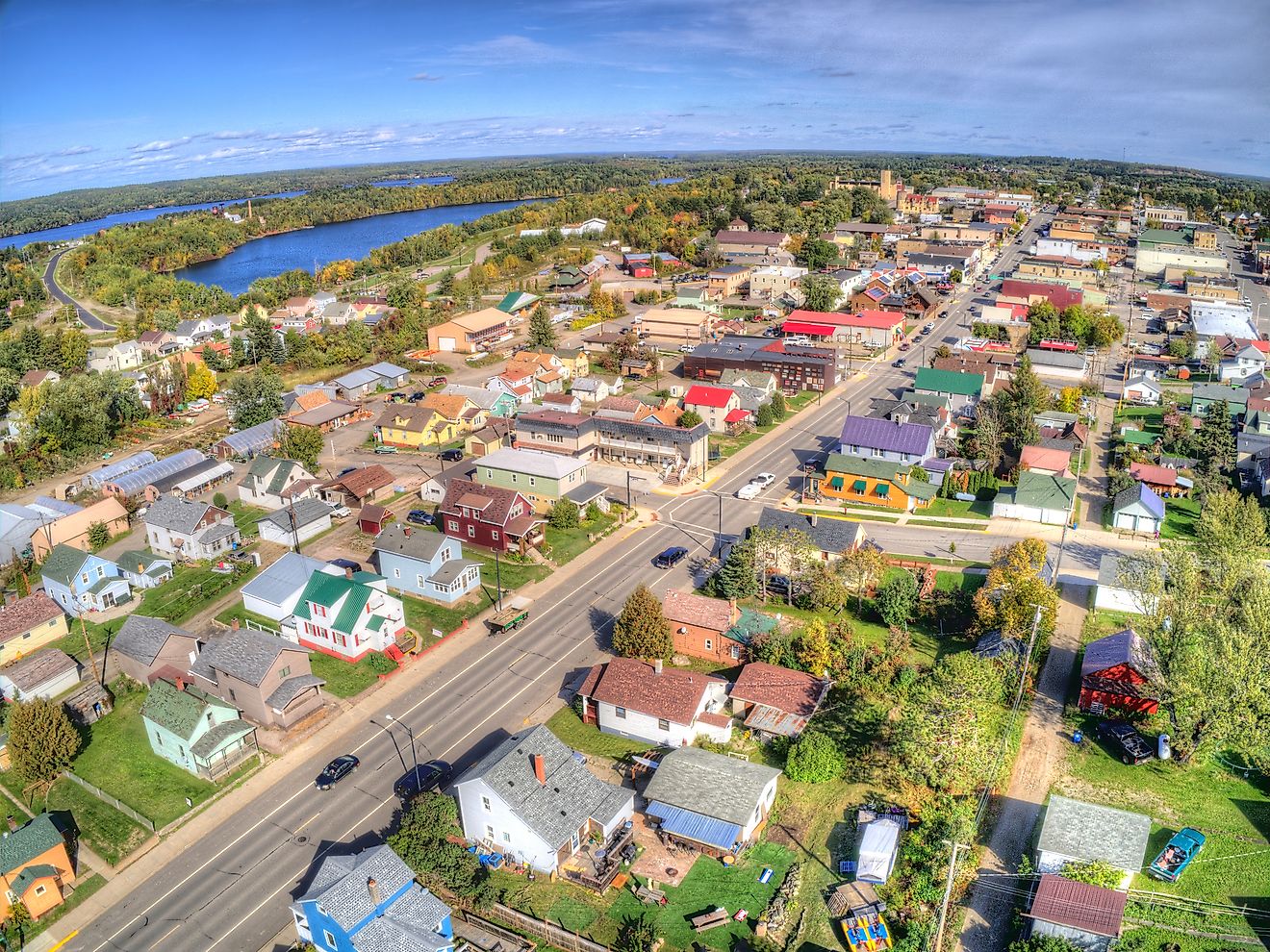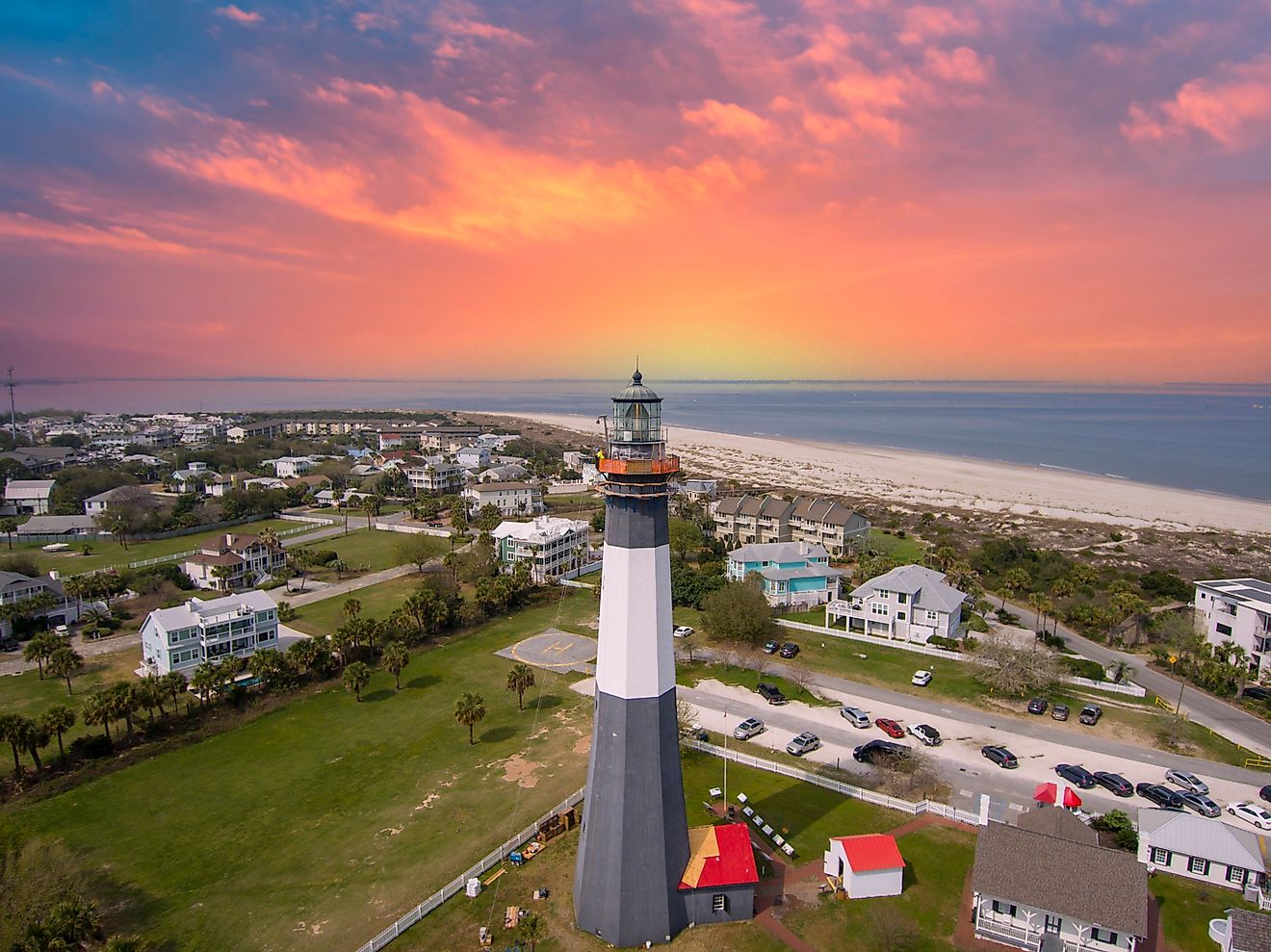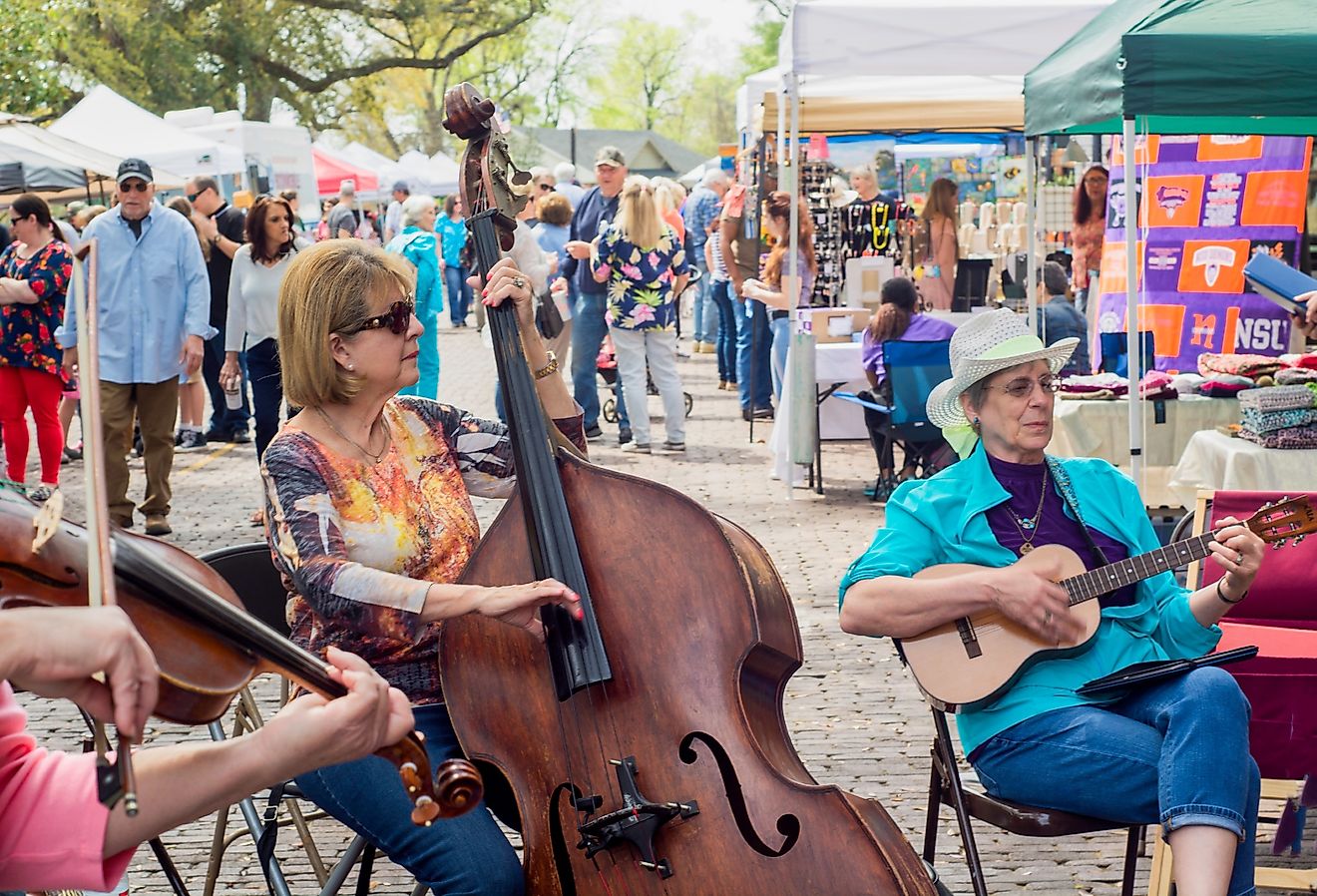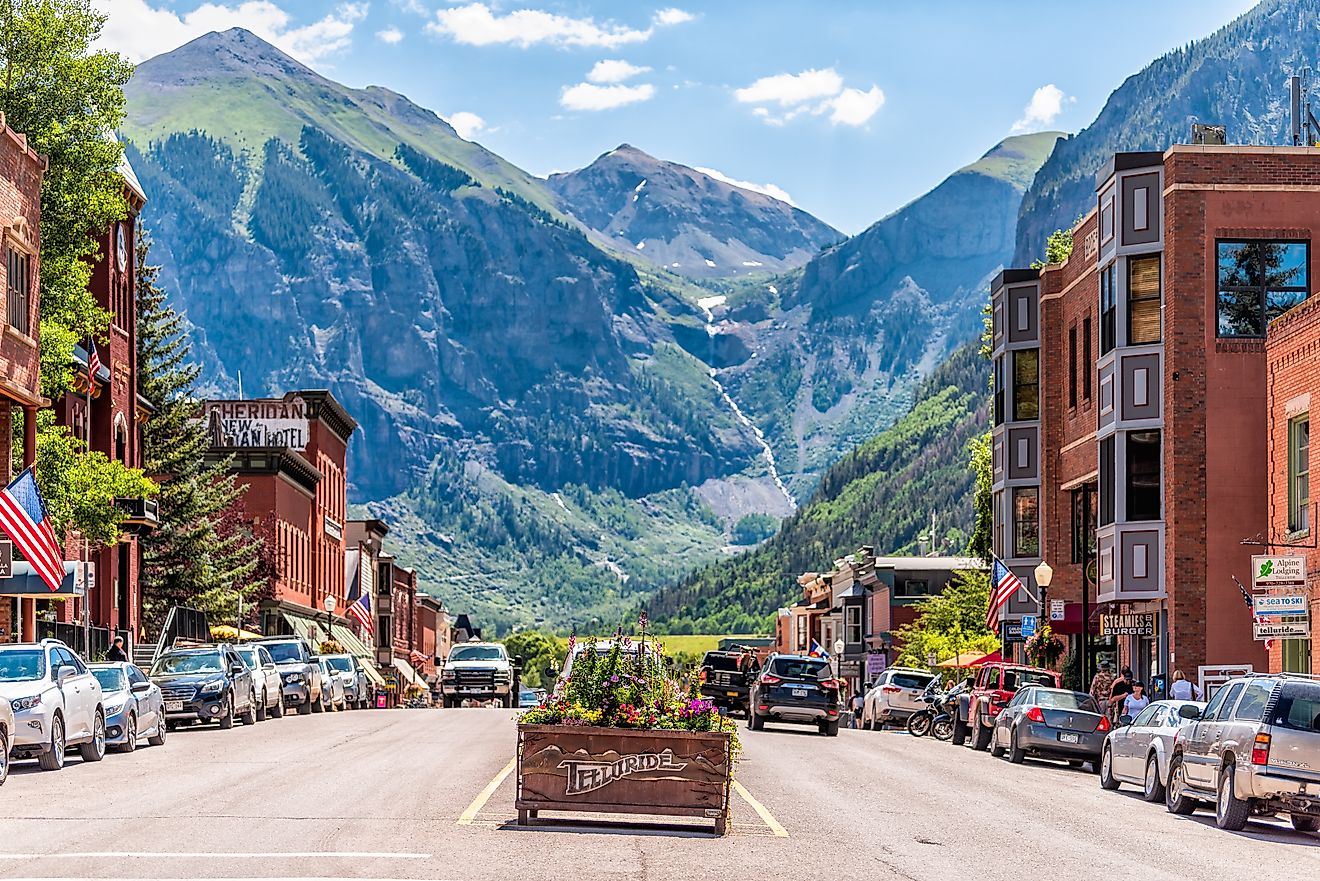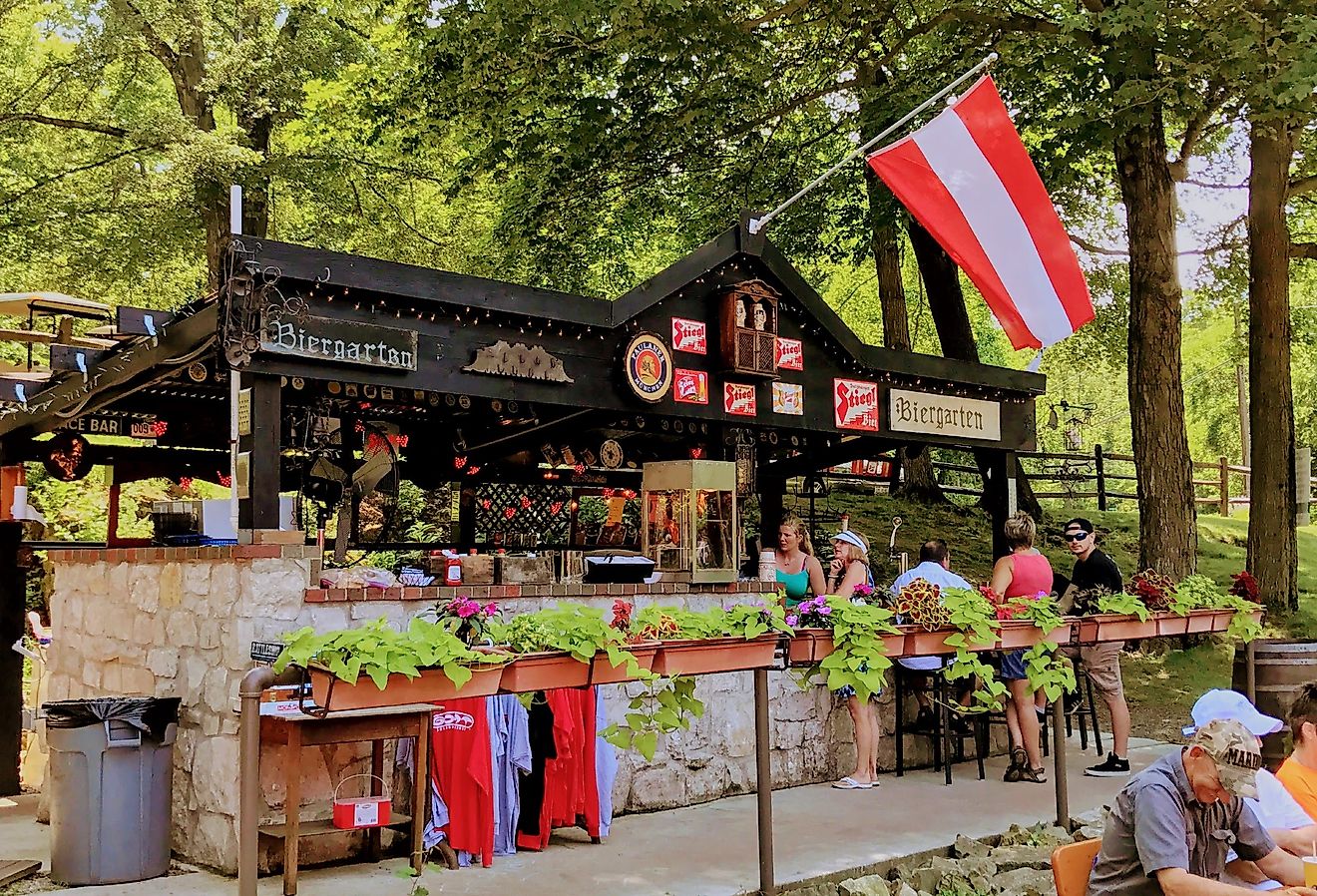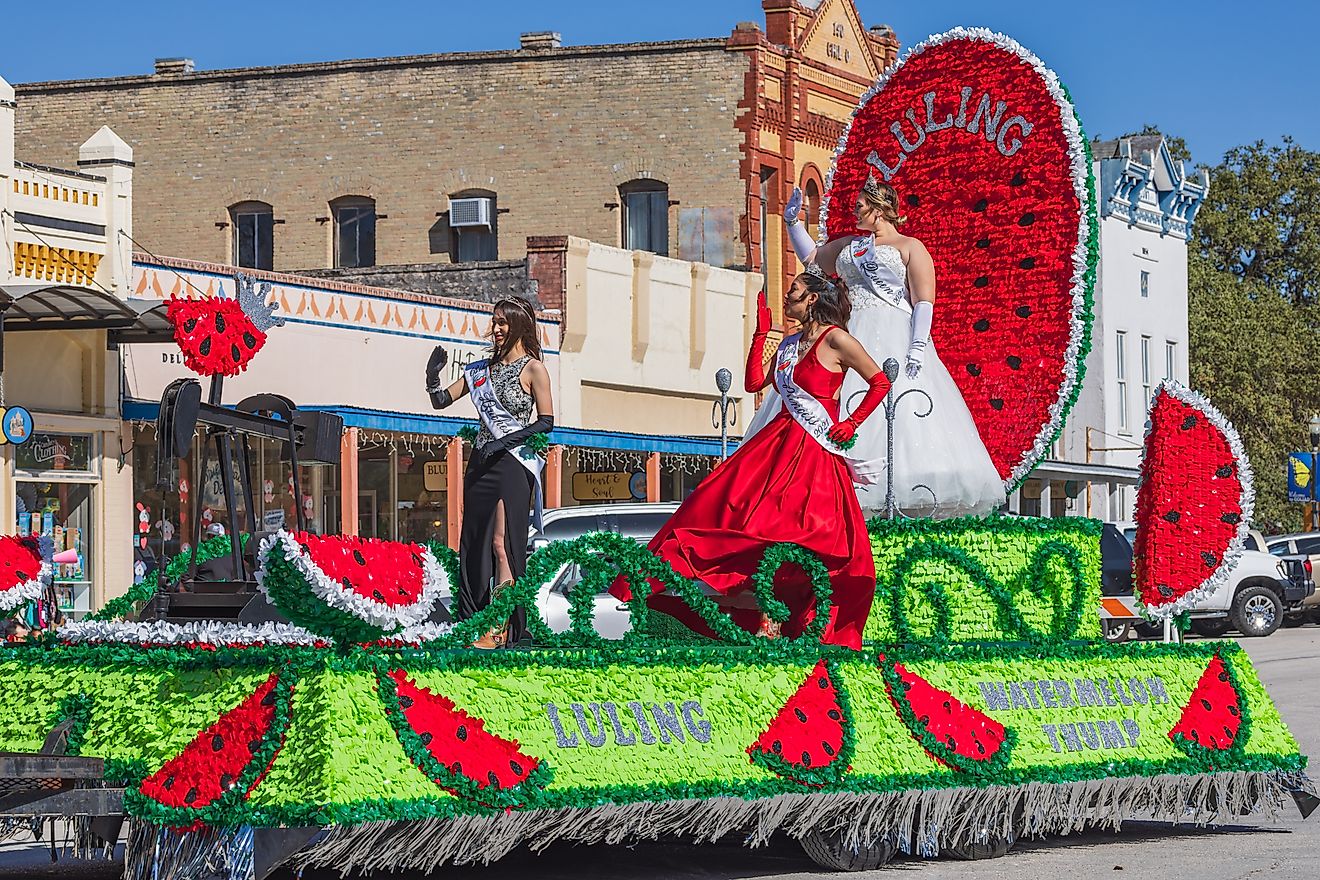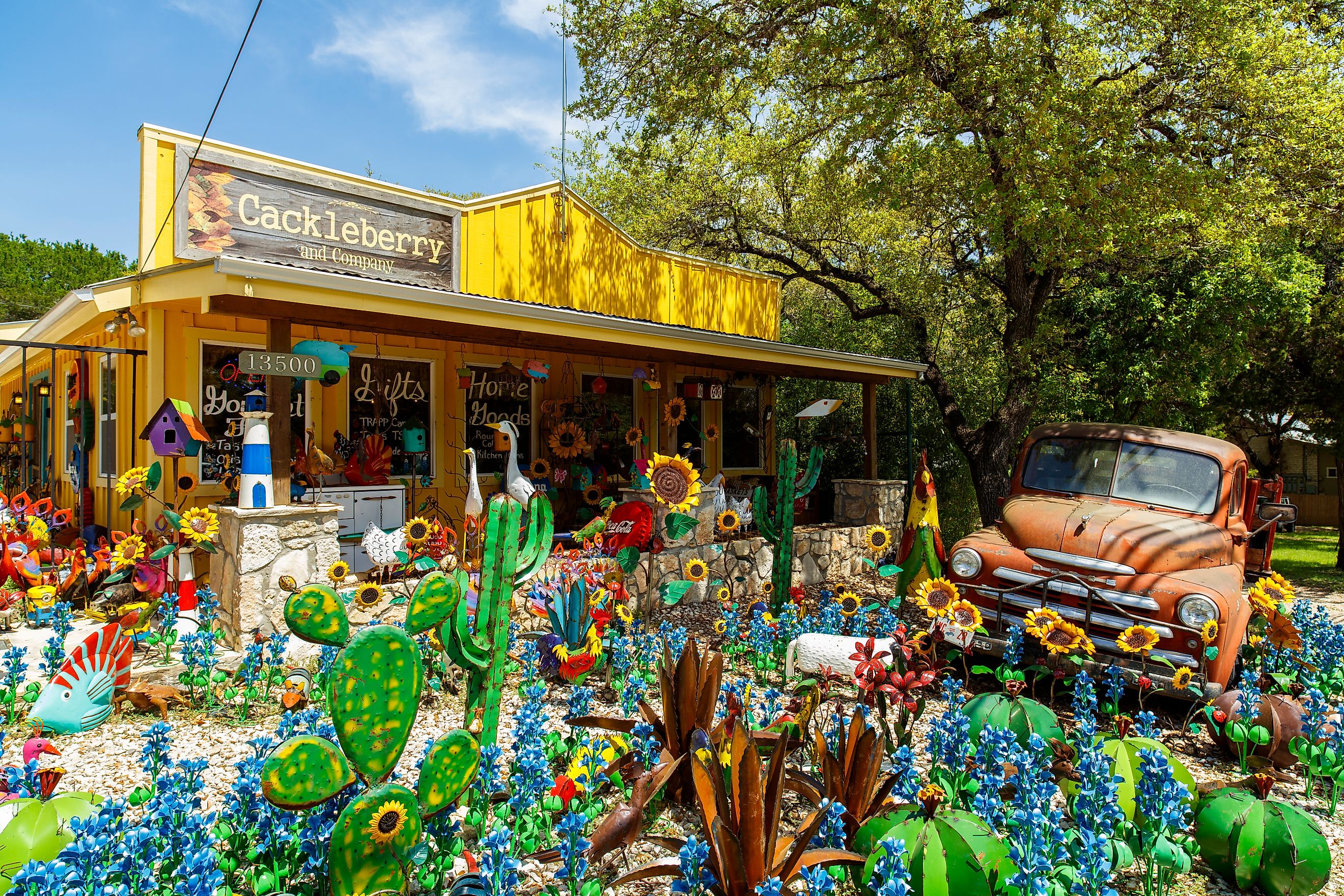
10 Serene Towns in Texas for a Weekend Retreat
Texas, a state known for its size and diversity, is a microcosm of America's landscapes and cultures. Stretching from the arid deserts of the west to the piney woods of the east and from the rolling Hill Country to the expansive Gulf Coast, Texas offers natural beauty and historical depth. And, it is home to a collection of small towns. Whether you are drawn to Germanic influences, artistic intrigue, or antebellum elegance, these ten towns are your best options for a serene retreat in the Lone Star State.
Fredericksburg
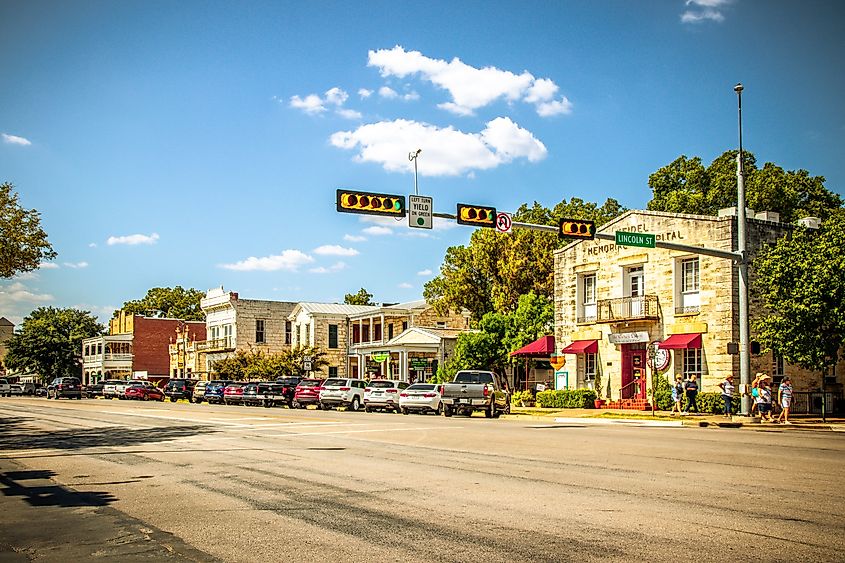
Founded in 1846 by German immigrants, Fredericksburg stands as a testament to the enduring legacy of European settlement in Texas. The town was named after Prince Frederick of Prussia, and its layout reflects the organized, communal nature of its early settlers. Today, it’s not uncommon to hear German spoken by some of the older residents, and the town’s Main Street is lined with preserved 19th-century buildings. Hoffman Haus is a great accommodation option. The cottages are inspired by traditional German-Texan architecture, with limestone facades and wooden beams.
Visitors can explore the Vereins Kirche, originally built in 1847 as a place of worship, school, and town hall. It is the focal point of the community. Another notable site is the Fredericksburg Nature Center, which showcases the diverse ecosystems of the Texas Hill Country. Here, there are trails through woodlands, grasslands, and riparian areas. The town is also home to the Texas Rangers Heritage Center, which celebrates the storied history of the Texas Rangers and their role in the state's history.
Marfa

Marfa was established in the early 1880s as a railroad water stop. The town’s name is reportedly inspired by a character in a Dostoevsky novel. Marfa's transformation began in the 1970s when artist Donald Judd moved to the area, attracted by the potential for large-scale installations. His influence is still deeply felt today, with the town housing the Chinati Foundation, a museum that integrates art with the stark desert landscape. Hotel Paisano, built in 1930, is a historic landmark that hosted the cast of Giant, including James Dean. The hotel’s Spanish Revival architecture and original tile work will make you feel like a celebrity for a weekend.
The Marfa Lights, first reported in the late 19th century, continue to draw visitors and scientists alike. The mysterious natural phenomenon that has yet to be fully explained. The Blackwell School, now a museum, tells the story of the segregated school system that existed in Marfa until the mid-20th century. Additionally, the Marfa and Presidio County Museum, located in a former adobe home, presents a detailed look at the region's history, from Native American artifacts to the influence of the railroad.
Wimberley

Wimberley’s history is closely tied to the Blanco River and Cypress Creek, which have drawn settlers to the area since the 1800s. Initially a trading post, the town grew around a gristmill established in 1856 by William Carvin Winters. The mill, which ground grain for local farmers, was central to the town’s early economy. The remnants of the mill can still be seen today. Meanwhile, the town’s natural beauty is evident in the towering cypress trees that line the waterways—a green canopy that contrasts with the surrounding Hill Country. Blair House Inn, perched on a hillside, is ideal for a serene weekend retreat.
Cypress Creek, with its clear, spring-fed waters, has been a gathering place for locals and visitors alike for centuries. The creek provides opportunities for swimming, kayaking, and picnicking under the shade of ancient cypress trees. Nearby, the Blue Hole Regional Park, with its deep swimming hole, is one of Texas’s most beloved natural swimming spots, surrounded by a forest that creates a secluded atmosphere. The Jacob’s Well Natural Area is another nearby attraction, featuring one of the longest underwater caves in Texas.
Alpine
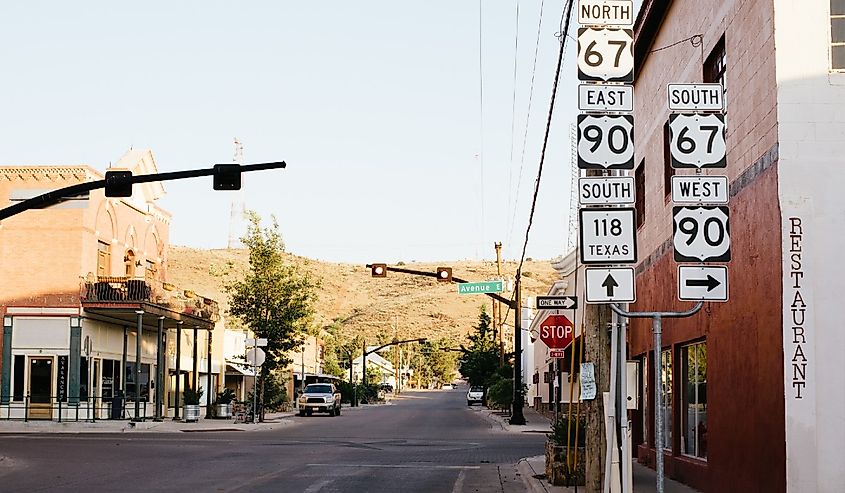
Alpine, the largest town in the sparsely populated Brewster County, was founded in 1882 as a stop along the Southern Pacific Railroad. The town quickly became a hub for ranching and trade, serving the ranchlands of West Texas. The presence of Sul Ross State University, established in 1917, has made Alpine a cultural outpost in the middle of the desert. For a historic stay, choose the Holland Hotel, built in 1928. The hotel’s design is a blend of Mission Revival and Spanish Colonial architecture.
Alpine is also known for its proximity to the Davis Mountains, one of Texas’s most scenic and least-explored regions. A drive up to the McDonald Observatory, perched atop Mount Locke, leads to views of the desert below and the clear night skies above, which are among the darkest in the continental United States. Kokernot Field, a historic baseball stadium known as “The Best Little Ballpark in Texas,” has hosted teams since the 1940s and remains a cherished local institution. For those interested in local art and history, the Museum of the Big Bend on the Sul Ross campus has exhibits that cover everything from the area’s prehistoric past to its role in the cattle ranching industry.
Salado

Salado, founded in 1859, was an important stop on the Chisholm Trail, the cattle-driving route that stretched from Texas to Kansas. The town’s history is closely tied to Salado College, which operated from 1860 to 1885 and was one of the first coeducational institutions in Texas. Although the college itself is long gone, its ruins remain a poignant reminder of the town’s early commitment to education and culture. Salado Creek’s clear waters and limestone bed provide a picturesque setting for the Inn on the Creek, where guests can enjoy the peaceful sounds of the flowing water and the shade of centuries-old oak trees.
Chalk Ridge Falls Park, located just outside of town, is home to a cascading waterfall and hiking trails that wind through dense forests. The historic Stagecoach Inn, which has been serving travelers since the mid-19th century, stands as a testament to Salado’s role as a key stop along the early Texas roadways. Another significant site is the Salado Glassworks, where visitors can watch artisans at work, crafting hand-blown glass pieces in a studio.
Port Aransas
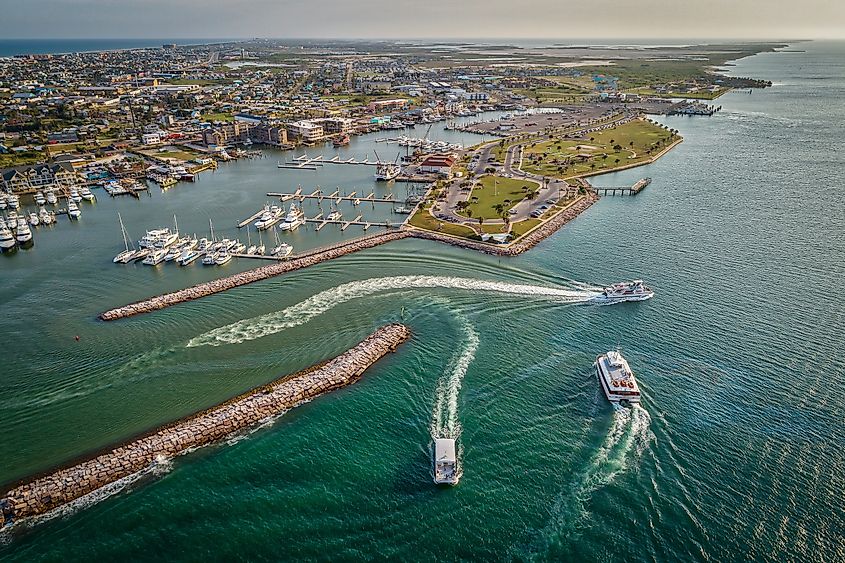
Port Aransas, known as the "Fishing Capital of Texas," has a history rooted in its coastal location on Mustang Island. The town was originally settled by the Karankawa Indians and later became a strategic point for pirates, including the notorious Jean Lafitte, in the early 19th century. The arrival of the Aransas Pass lighthouse in 1855 marked the beginning of a more permanent settlement, and by the late 1800s, the town had developed into a small fishing village. The Sandpiper Condominiums offer visitors direct access to the Gulf of Mexico, with the sound of waves creating a soothing ambiance.
The Port Aransas Wetlands Park is a spot for birdwatching, where visitors can observe a wide variety of species that inhabit the coastal marshes. The Aransas Pass Lighthouse, though no longer operational, remains a historic landmark and can be visited via boat tours that also explore the nearby Lydia Ann Channel. The nearby Mustang Island State Park is a natural escape with miles of sandy beaches and dune trails for hiking and birdwatching.
Granbury

Granbury, located on the banks of Lake Granbury, is named after Confederate General Hiram B. Granbury and is known for its well-preserved Victorian-era architecture. Granbury’s historic downtown square is listed on the National Register of Historic Places. The Inn on Lake Granbury has luxurious accommodations with private lakefront access for a serene weekend away.
Visitors to Granbury can explore the Hood County Courthouse, an example of Second Empire architecture, which dominates the town square. The nearby Acton Nature Center is a peaceful setting for hiking and birdwatching, with trails that meander through prairies and wetlands. Another attraction is the Granbury Cemetery, where the alleged remains of Jesse James, the infamous outlaw, are said to be buried.
Jefferson

Jefferson, located in the pine forests of East Texas, was once one of the most important river ports in the state during the mid-19th century. The Red River allowed steamboats to transport goods to and from New Orleans, making it the "Gateway to the West" before the rise of the railroad. Jefferson's history is reflected in its antebellum architecture and cobblestone streets. The Excelsior House Hotel, built in 1858, is the oldest continuously operating hotel in Texas and has hosted notable figures such as Ulysses S. Grant and Lady Bird Johnson. Don't miss the chance to stay here.
Visitors can explore the Jefferson Historical Museum, housed in a former courthouse, where exhibits detail the town’s rise as a transportation hub and its subsequent decline after the Civil War. The museum’s collection includes artifacts from Jefferson’s golden age. Another notable attraction is the Sterne-Hoya House Museum and Library, an example of early Texas architecture. The Caddo Lake National Wildlife Refuge, located just outside Jefferson, has a maze of bayous, wetlands, and cypress trees draped in Spanish moss. The refuge is a haven for birdwatchers.
Llano
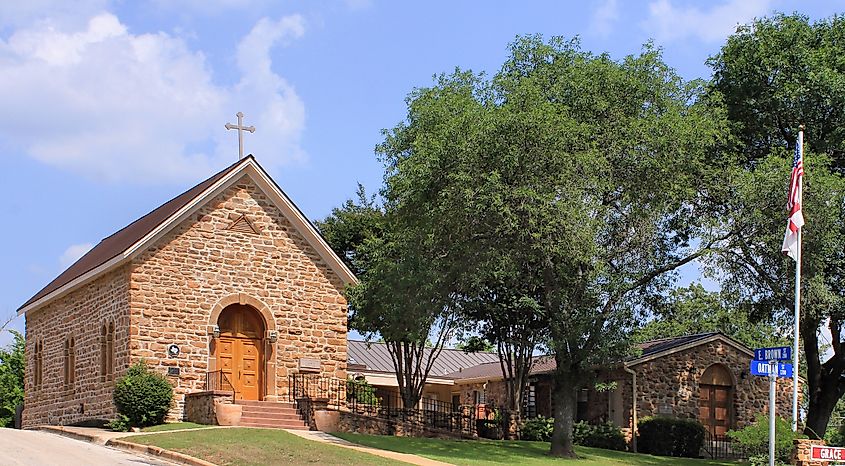
Llano, nestled in the heart of the Texas Hill Country, was established in 1856 as a frontier outpost on the banks of the Llano River. Llano’s history is deeply intertwined with the cattle drives of the late 19th century, which brought prosperity to the region and earned the town its reputation as the "Deer Capital of Texas." The Dabbs Railroad Hotel, built in 1907, is a historic landmark that once served as the final stop for cattle drives heading to market. The hotel’s rustic charm and riverside location make it an ideal base for exploring Hill Country.
The Llano County Courthouse, an example of Romanesque Revival architecture, is a focal point of the town’s historic district and stands as a testament to Llano’s early prosperity. Just outside of town, the Llano River offers opportunities for kayaking, fishing, and swimming, with its clear waters. Another natural attraction is the nearby Enchanted Rock State Natural Area, where a massive pink granite dome rises above the landscape—a unique geological experience.
Dripping Springs
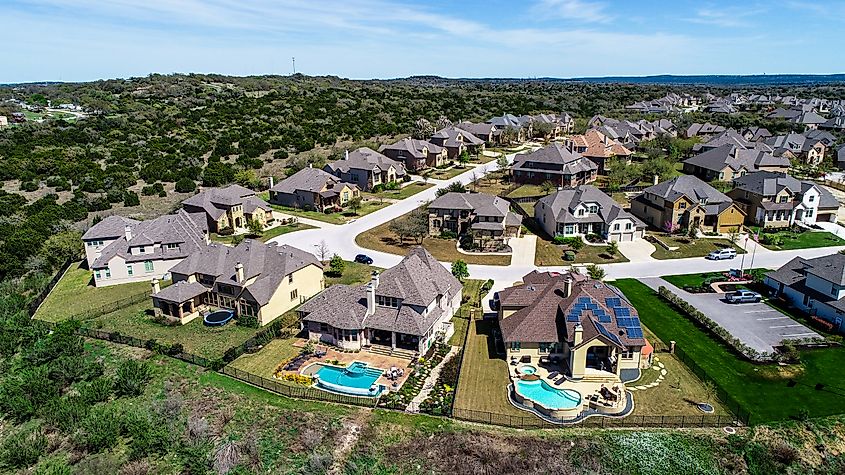
Dripping Springs, often referred to as the "Gateway to the Hill Country," was settled in the 1850s by pioneers drawn to the area’s springs and fertile soil. The town’s name is derived from a limestone ledge that drips water into a small stream. Rolling hills and oak groves define Dripping Springs' landscape. The Alexander at Creek Road has cottages that blend into the natural surroundings, ideal for a peaceful stay.
One of the town’s most iconic natural features is the Hamilton Pool Preserve, a natural swimming hole created by the collapse of an underground river thousands of years ago. The pool’s emerald waters, limestone grotto, and waterfall make it one of the most tranquil spots in Texas. The Dr. Pound Historical Farmstead, located in Dripping Springs, is a well-preserved homestead that looks at the life of early Texas pioneers. The site includes original buildings, artifacts, and gardens. For those interested in local wildlife, the Westcave Outdoor Discovery Center has guided tours of a limestone grotto and waterfall. The tour focuses on the conservation of the region’s natural resources.
In Summary
These ten serene towns in Texas offer more than just a peaceful escape; they provide a deep connection to the state’s history and nature. Each town invites visitors to slow down and experience the essence of Texas. By choosing to stay in these towns, visitors not only enjoy a serene weekend but also support the preservation of Texas’s cultural and natural heritage, ensuring that these small communities continue to thrive for generations to come.
